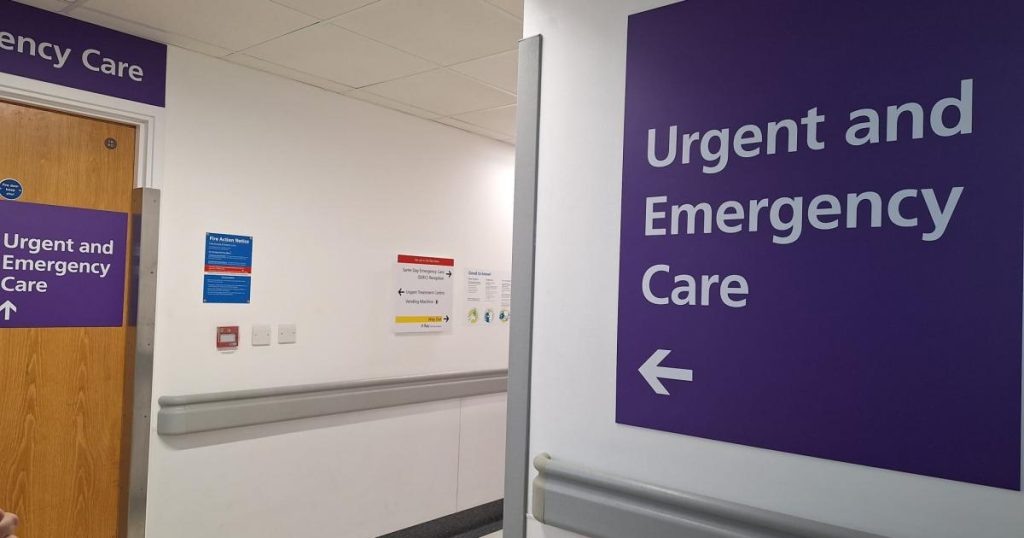I visited the Romford hospital on Monday (January 20), and it was immediately clear that the emergency department is no longer fit for purpose.
Heartbreakingly, this is in spite of the best efforts of staff, who are burnt out trying to look after the hundreds of patients who come in every day.
I started my visit at the Urgent Treatment Centre, where you would enter A&E as a walk-in, and was shocked to discover that there is no dedicated waiting room.

Instead, chairs are lined up along the narrow corridor as you walk through to the front desk, and the space overall resembles a small GP practice – not the main reception of a busy emergency department in London.
READ MORE: £35m campaign to transform Queen’s Hospital A&E launches
The closest thing the A&E as a whole has to a waiting room is the Rapid Assessment and First Treatment unit (RAFT), which has been converted from what used to be a paediatric area.
There is also only one mental health room and one shower for the entire department.
Queen’s Hospital A&E is distinctly maze-like, with a circular design that does not let the light in to most areas and makes the space seem even more cramped than it is.

Walking through the corridors from the main reception you can begin to get a sense of what it must feel like to be stuck here waiting for treatment for more than two days.
This is now not a rare situation – I was told when I visited that a mental health patient had been waiting at least 60 hours to be seen.
The Recorder has also spoken to Romford resident Paul Crouchman, whose dad was in the corridor with pneumonia for 72 hours.
Previously, if you arrived at Queen’s A&E by ambulance, you would be registered at the ambulance reception and assessed in RAFT, at the centre of the department, where you would then either receive treatment for minor injuries or be transferred to majors.
With the current lack of capacity, however, those who need major investigation or treatment now have to go to the corridor.
Patients are being cared for in up to five corridors leading up to RAFT, and on my way towards the ambulance reception I counted at least 20 patients on beds in the corridor.
READ MORE: Queen’s Hospital A&E ‘challenged’ with busiest December ever
There were patients in the corridor right up until the door where the ambulances come in – which is frequently opening and closing, letting the cold in.
Almost all of these patients were elderly and extremely frail – with two patients in who were more than 100 years old when I visited – and walking past I could not help but feel that our elderly are being let down in the most terrible way.

There was not a lack of staff on hand to help patients when I visited and Barking, Havering and Redbridge University Hospitals Trust (BHRUT), which runs Queen’s, has taken on more staff to care for patients on beds in corridors.
It was also clear that the hospital is trying to make the best of what space it does have, with former storage or IT rooms converted into “ED patient comfort rooms”.
As BHRUT chief executive Matthew Trainer says, it is time to “end the indignity of corridor care”.
But the situation overall is dire, and Queen’s desperately needs to secure the £35 million funding to transform the A&E for the benefit of patients, their families and staff.



